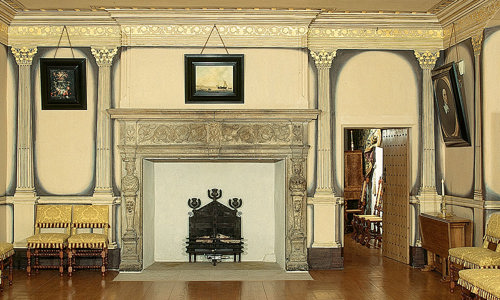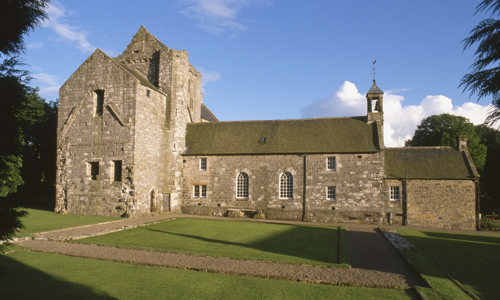History
Dunblane Cathedral is a fascinating building that stands on a site that has been sacred for well over 1,000 years. Its beautiful Gothic exterior, conserved by a 19th-century restoration, hides a past of neglect and renewal.
The distinctive red sandstone tower sits at a strange angle to the later church, which was laid out in one go and survives mainly because it went on to serve as a parish church. The chancel was used for worship up until 1886, when it was deemed too small.
The ruined nave was restored to the designs of Robert Rowand Anderson from 1889, with the weathered medieval stonework retained.
Today, the church is an active place of worship. Inside are Pictish carved stones, rare 15th-century choir stalls and handsome 19th-century church furnishings.
Medieval cathedral
Two cross-slabs from the 7th or 8th century found on the site suggest an early Christian presence. There has probably been a religious centre here since at least the 9th century.
The name Dunblane (meadow of Blane) perhaps comes from the site’s use by monks from St Blane’s. They may have fled the Isle of Bute with their saint’s relics to escape Viking raids.
The first mention of a bishop at Dunblane was in 1155, following the return of the bishopric and the building of the first cathedral. It still stood unroofed in 1237, when Bishop Clement secured papal approval to replace it with a grand new cathedral.
The new cathedral included:
- the original tower, which survives in an unusual position next to the south wall of the nave
- a six-bay, aisle-less chancel, with a sacristy and chapter house along its north side
- an eight-bay aisled nave
The cathedral was staffed by secular canons, or priests. They performed their daily services in the choir, separated from the nave by a screen across the broad arch – slots above the arch show the screen’s likely position. A great rood – or cross – once stood in the rood loft above the screen, and the choir stalls backed onto the screen.
Reformation and restoration
Following the Protestant Reformation of 1560:
- the interior furnishings were torn down
- a reformed minister took over responsibility for public worship
- public worship was confined to the chancel, leaving the nave to fall into decay – its roof collapsed in 1622
Architect James Gillespie Graham restored the chancel in 1816. By 1886, its capacity had been deemed insufficient, and the nave was restored under Robert Rowand Anderson’s direction. The elaborate pews and choir stalls were added between 1912 and 1914.
A recent addition to the church is a memorial to the victims of the 1996 Dunblane massacre, located in the south aisle.
















